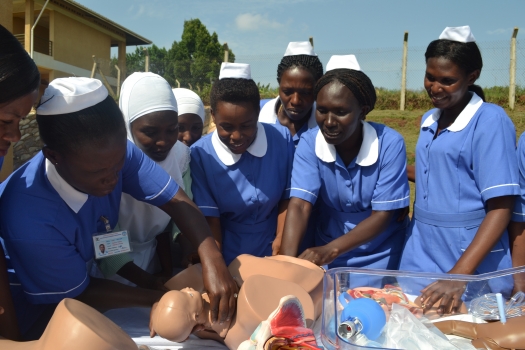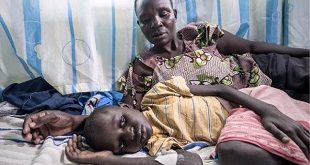
The World Health Organisation (WHO) has released its health statistical report for the Sustainable Development Goals (SDGs). The ‘Monitoring Health for SDGs’ report reveals that whereas Ugandans are on average living longer than in the past, only 58% of births are attended by a skilled health personnel.
According to the report, “the 17 SDGs of the 2030 Agenda integrate all three dimensions of sustainable development (economic, social and environmental) recognizing that eradicating poverty and inequality, creating inclusive economic growth and preserving the planet are inextricably linked.” In particular, the report aimed at assessing the current situation and describing the crucial data gaps.
It is also further stated that reducing maternal and child mortality rates remain some of the major challenges in developing countries. Coupled to this, is the challenge of improving nutrition and achieving progress in battle against infectious and tropical diseases.
Despite all these challenges, life expectancy increased globally with a 5.0 increment in years between 2000 and 2015. In the WHO region, there was an even larger increase of 9.4 years. For Africa, the success story was about the closed gap in its life expectancy which narrowed by 9.9 years since the year 2000.
Algeria life expectancy top in Africa
Algeria topped Africa with the highest life expectancy of 75.6 years. Rwanda performed better than its neighbours in the region, standing at 66.1 years. Uganda, Kenya and Tanzania came in at 62.3, 63.4 and 61.8 respectively. Women still live longer than men in every country of the world. Female life expectancy is registered at 73.8 years compared to Male life expectancy of 69.1 years. Uganda continues to fall short of the global life expectancy which is 71.4 years. Also to be noted is that the countries with the lowest life expectancy are all African such as Chad, Sierra Leone and Angola.
It becomes pretty obvious in the report that Rwanda has established itself as an outlier in the region. Its maternal mortality ratio (per 100,000 live births) stood at 290 compared to 343 for Uganda, 398 for Tanzania and 510 for Kenya. These figures could be correlated with the proportion of births attended by skilled health personnel in the various countries. Whereas 91 percent of births in Rwanda are attended by skilled health personnel, for Uganda it’s 58%, Kenya (62%), Ethiopia (16%), and Tanzania (49%). Thus if maternal mortality ratios are to be reduced, countries may have to ensure that more births are attended by skilled health personnel.
Similarly, this could have played a part in the under-five mortality and neonatal mortality rates (per 1000 live births). Rwanda registered only 41.7, Kenya, 49.4, Uganda 54.6, Tanzania at 48.7 while Ghana and Ethiopia was at 61.6 and 59.2.
Uganda losing HIV fight
Uganda may also have to rethink its fight against HIV/AIDS. Experts and analysts have predicted that Uganda may be losing the fight despite previous achievements. Compared to its neighbours, Uganda has 6 new HIV infections among adults 15-49 years (per 1000 uninfected population), Rwanda at 1.1, Kenya at 2.3 and Tanzania at 2.6. In the list of surprises is Burundi with only 0.1 new HIV infections and Niger with less than 0.1 new infections.
And just in case one thinks Ugandans are happier, the numbers don’t seem to support the claim. The suicide mortality rate per 100,000 of the population was 11.9, in Kenya it is 10.8, Tanzania is the highest in the region with 15.1 while Rwanda is at 7.6. Algeria has the lowest suicide rate in Africa at only 1.8.
Finally, more thought should be given to establishing a correlation between a country’s total alcohol per capita (consumption in litres of pure alcohol) and road traffic injuries. Uganda has an alcohol per capita of 10.5 and a road traffic mortality rate (per 100,000 population) of 27.4. Rwanda is at 10.0 in alcohol per capita and 32.1 road traffic mortality rates. Despite its high population, Nigeria is the 3rd best in Africa with a road traffic mortality rate of only 20.5.
WHO: World Health Statistics 2016 by The Independent Magazine
 The Independent Uganda: You get the Truth we Pay the Price
The Independent Uganda: You get the Truth we Pay the Price


